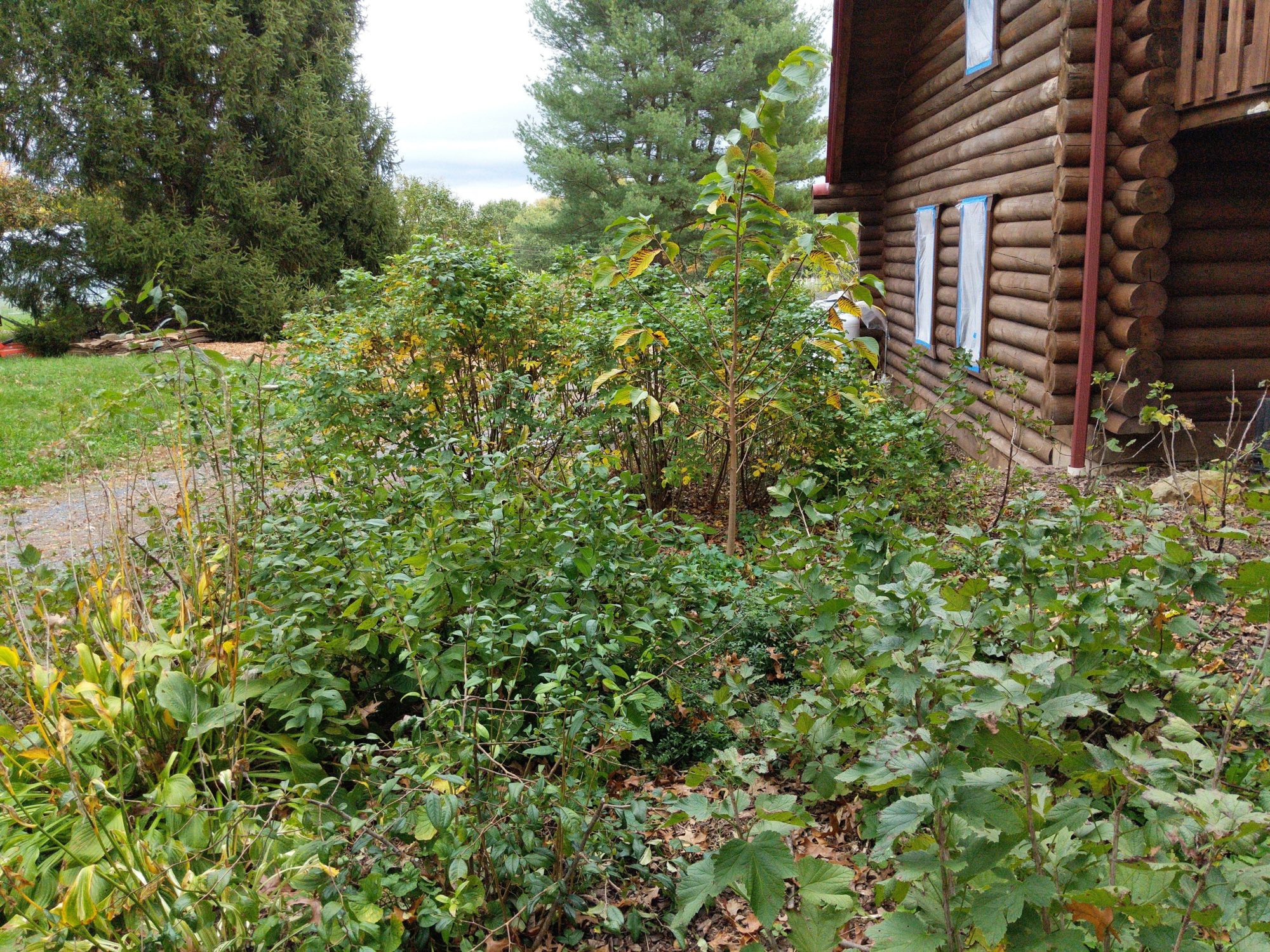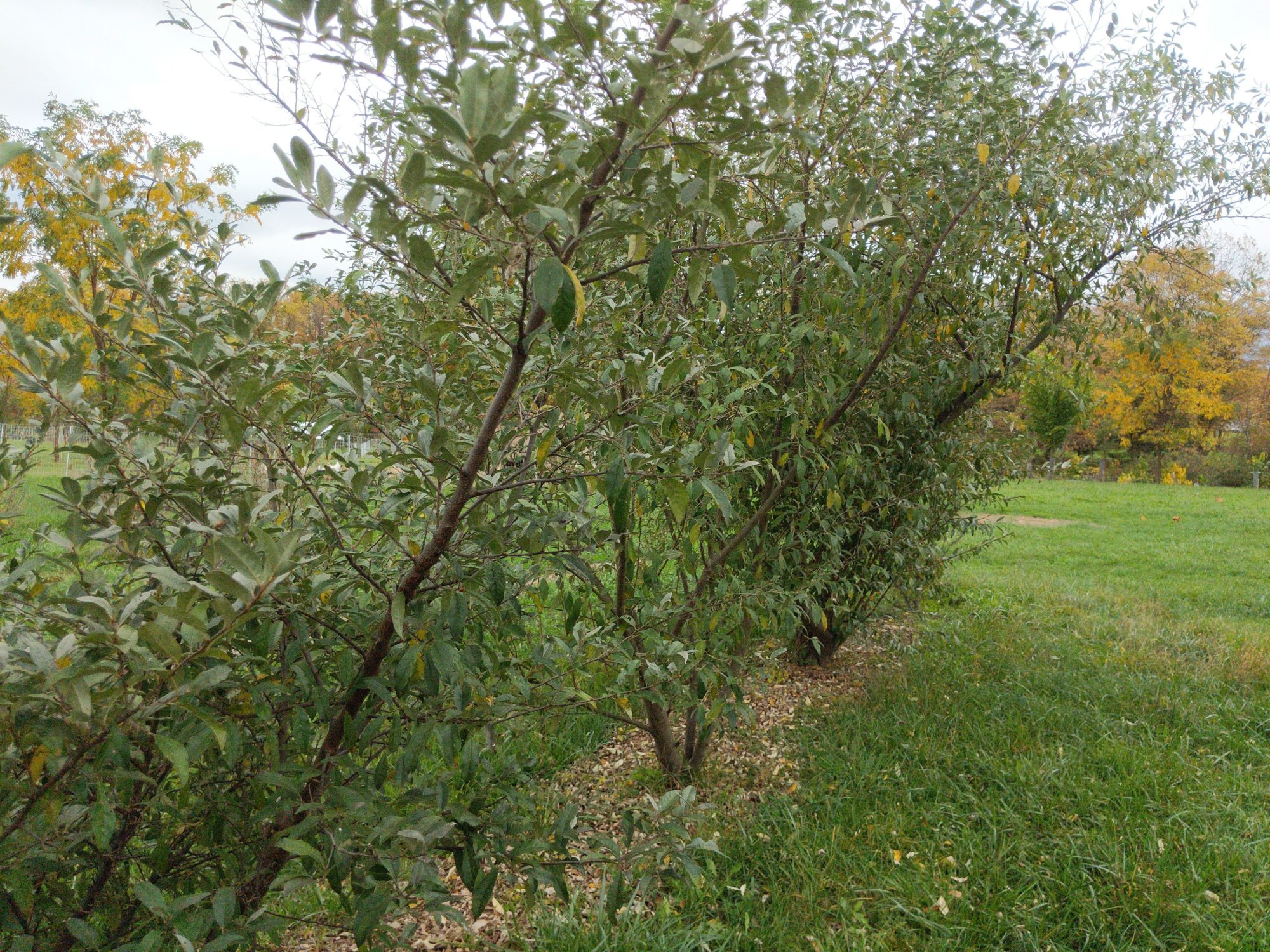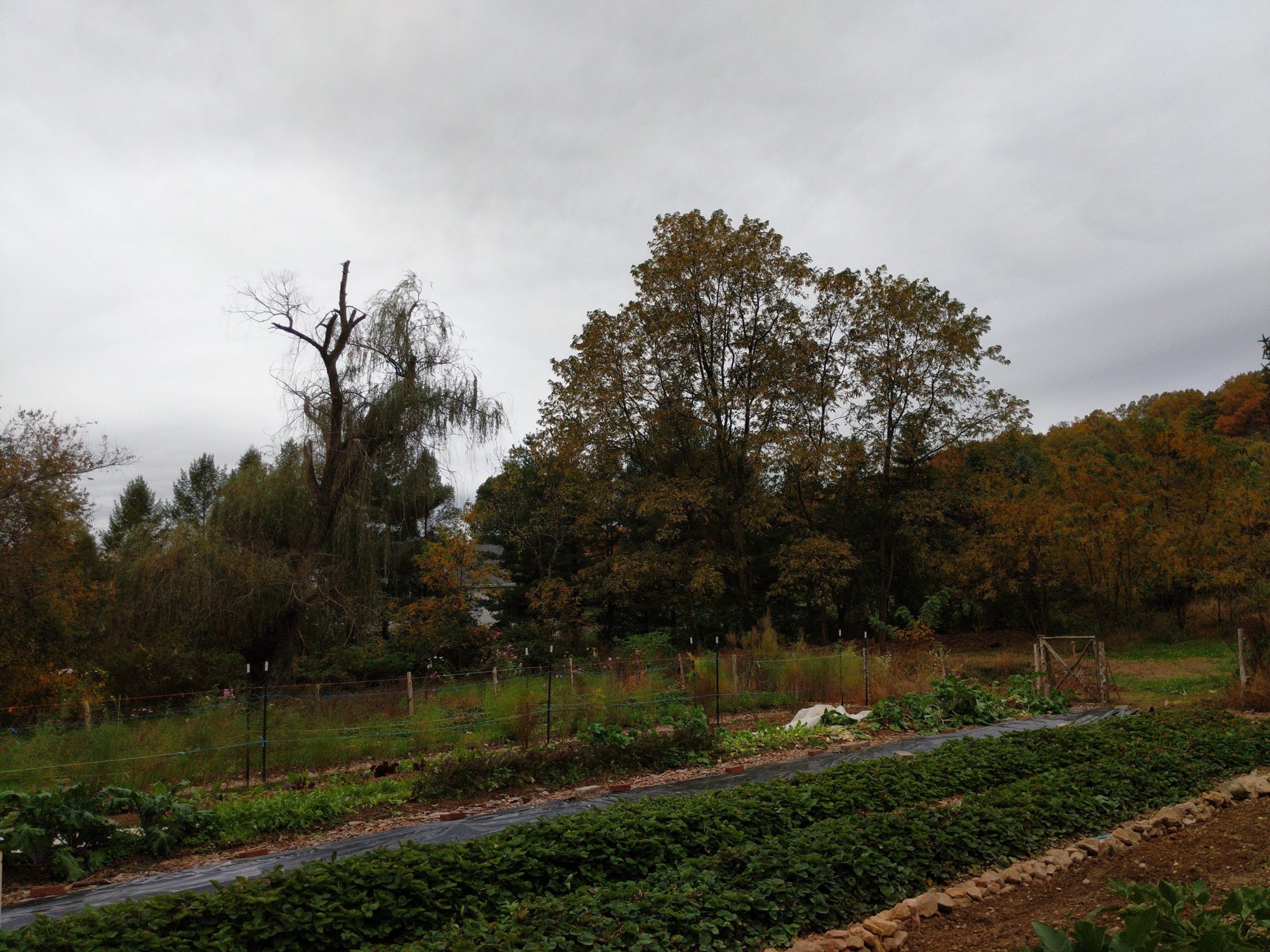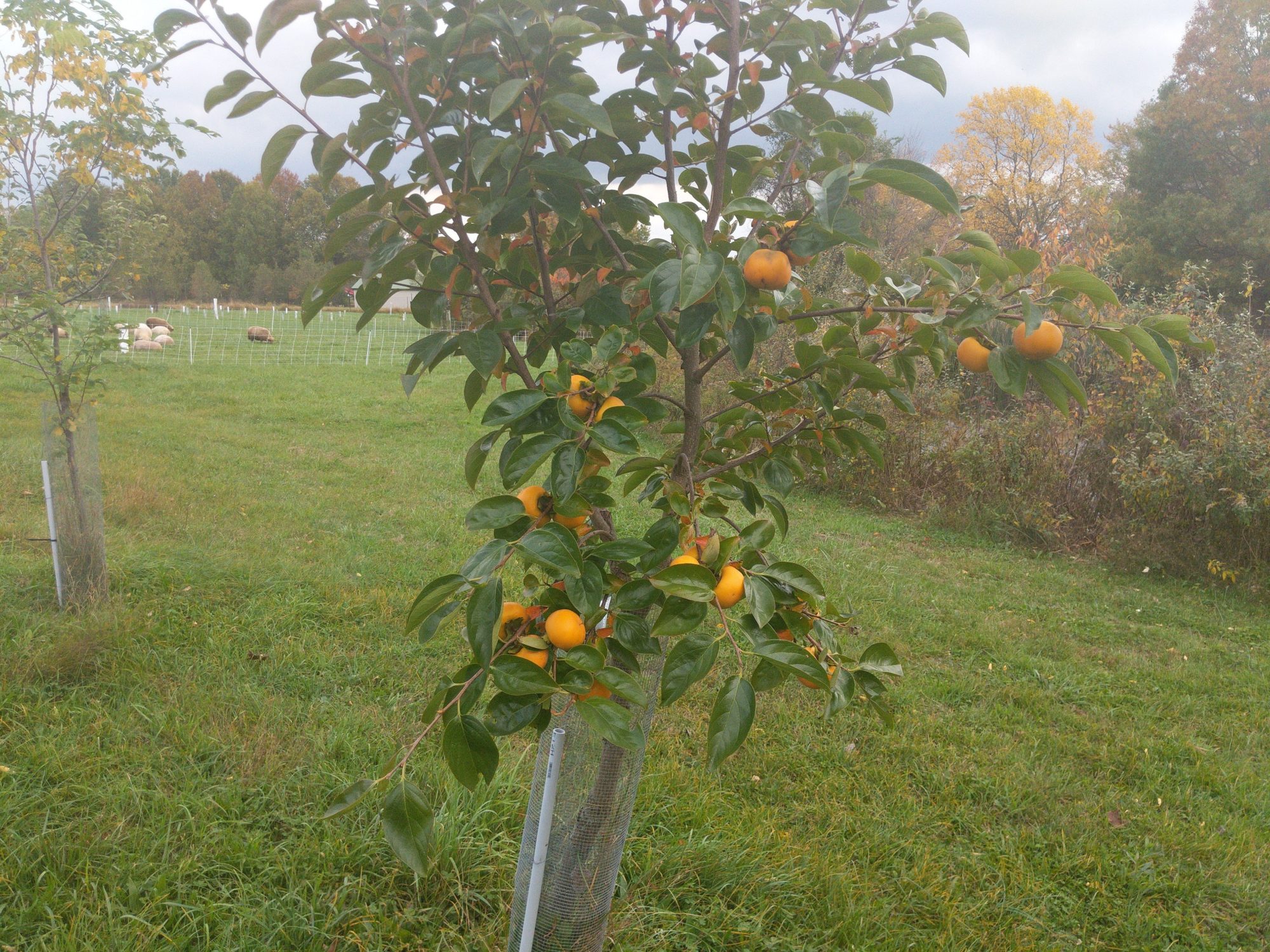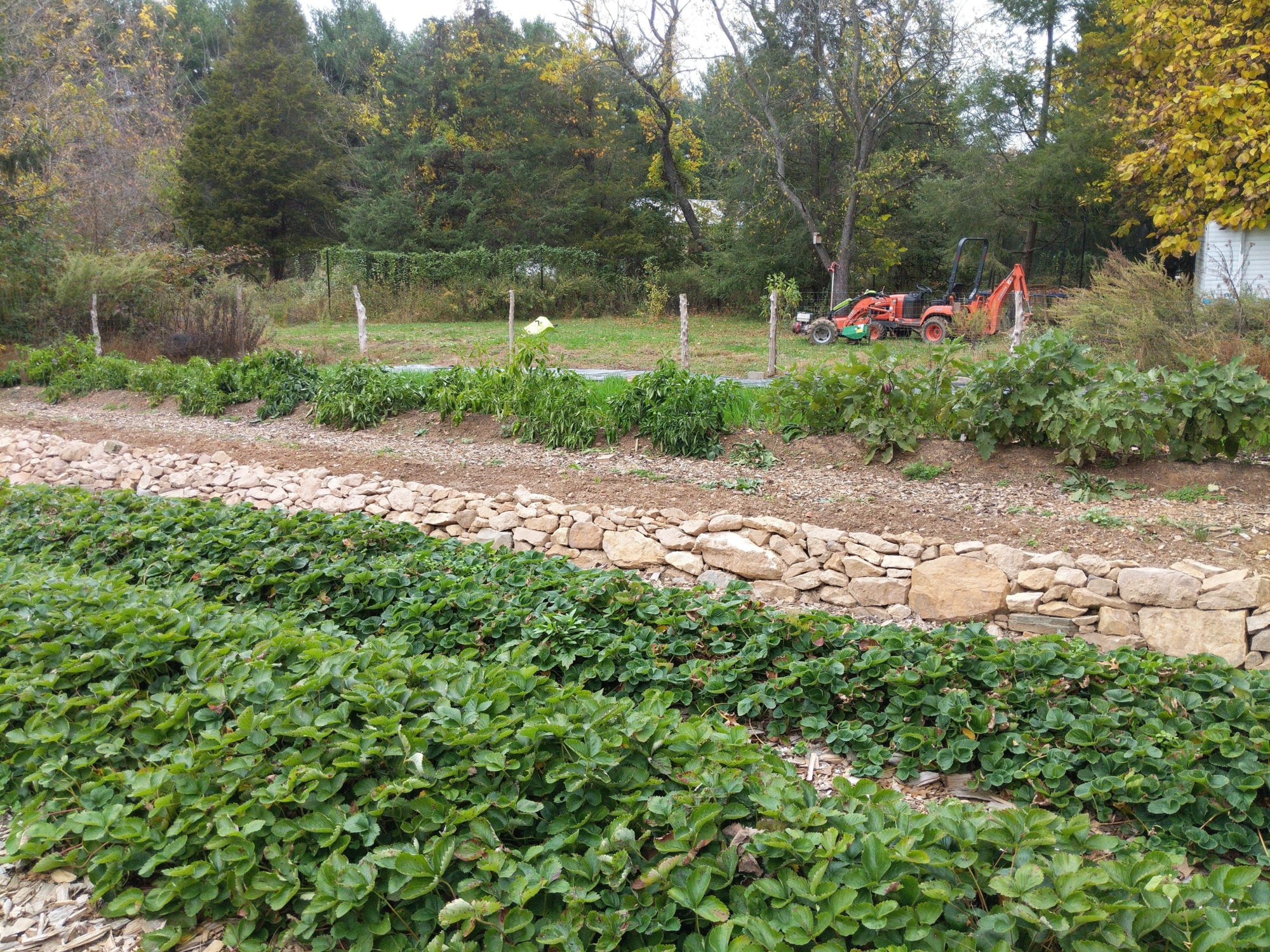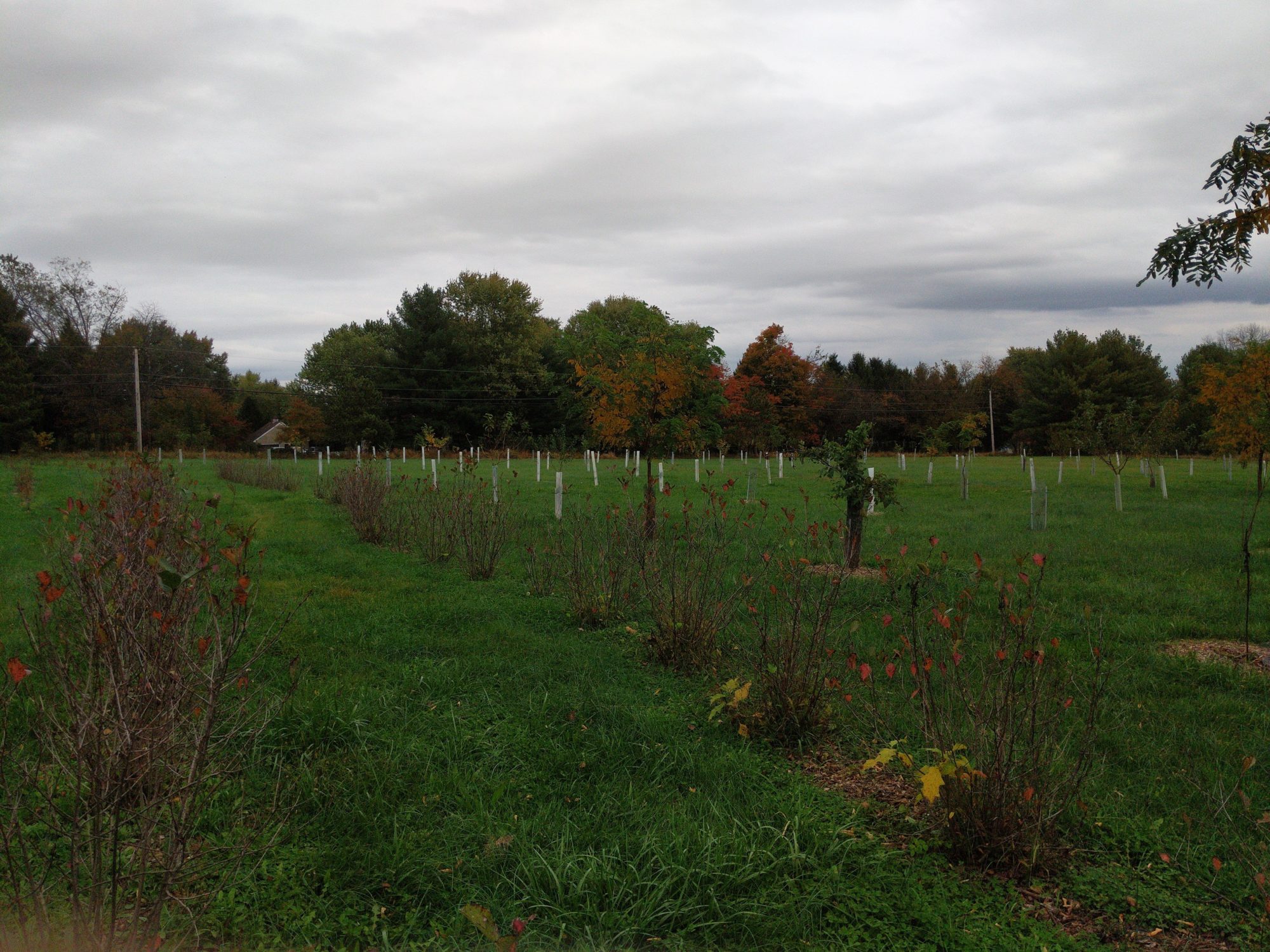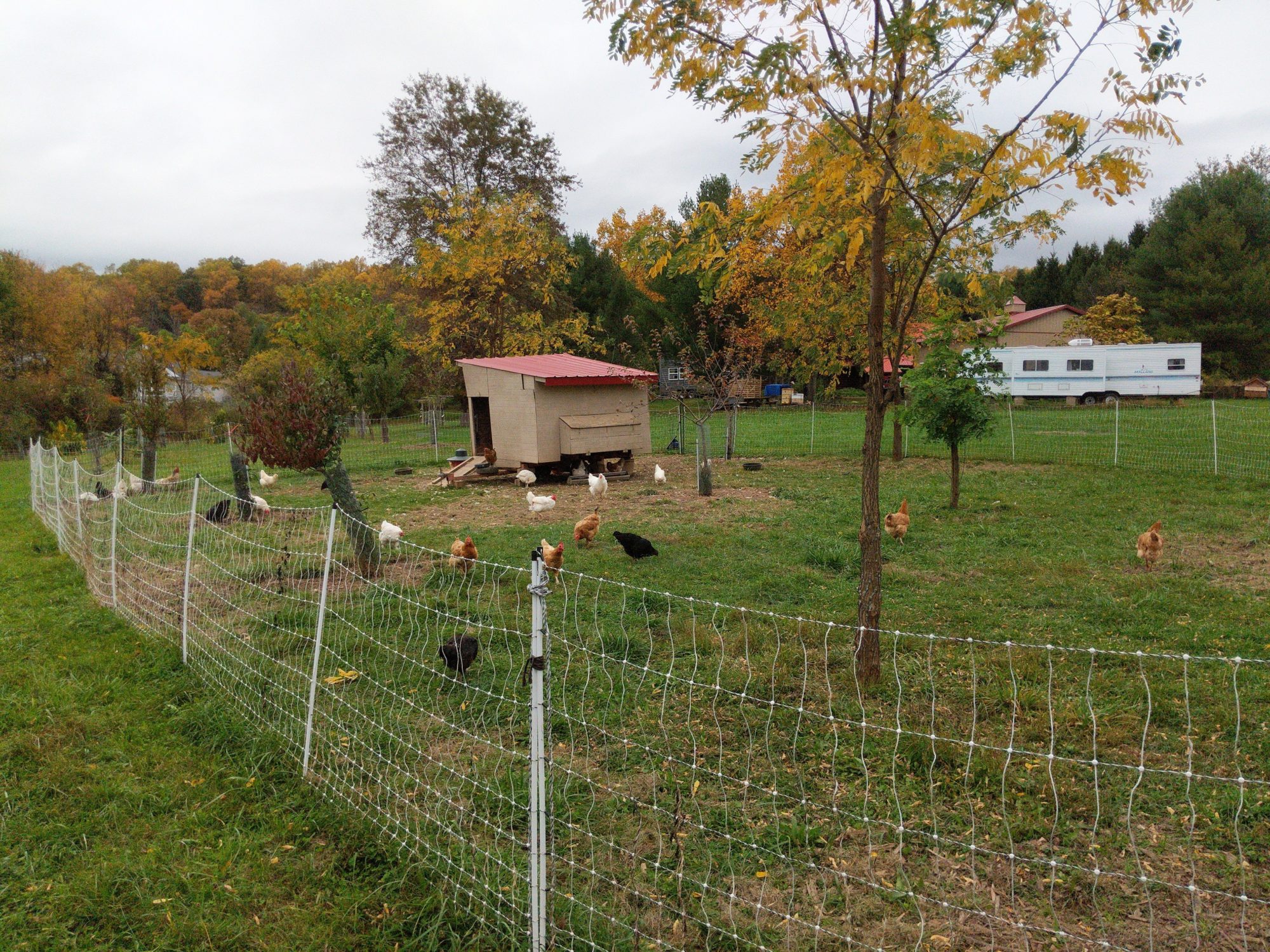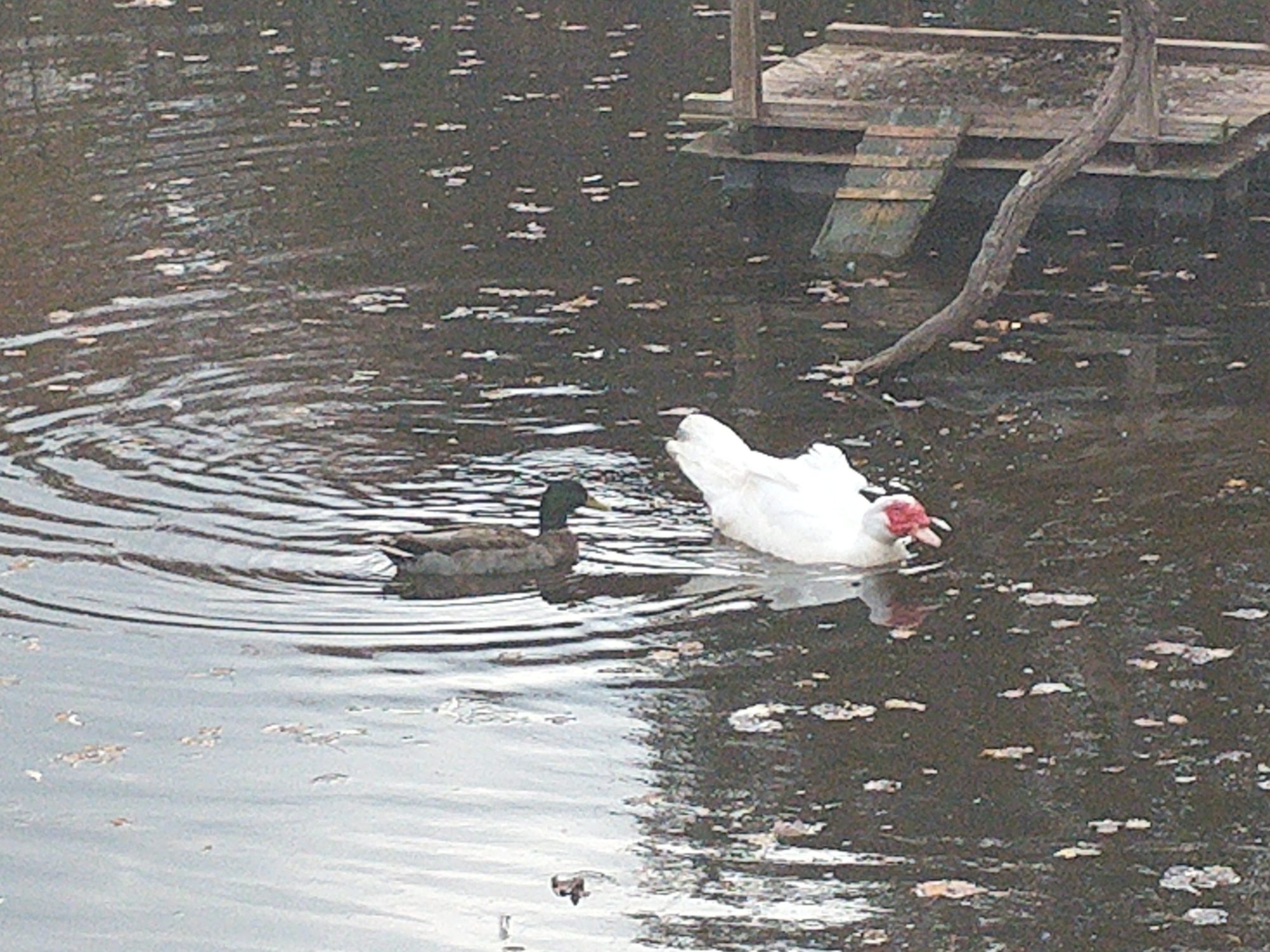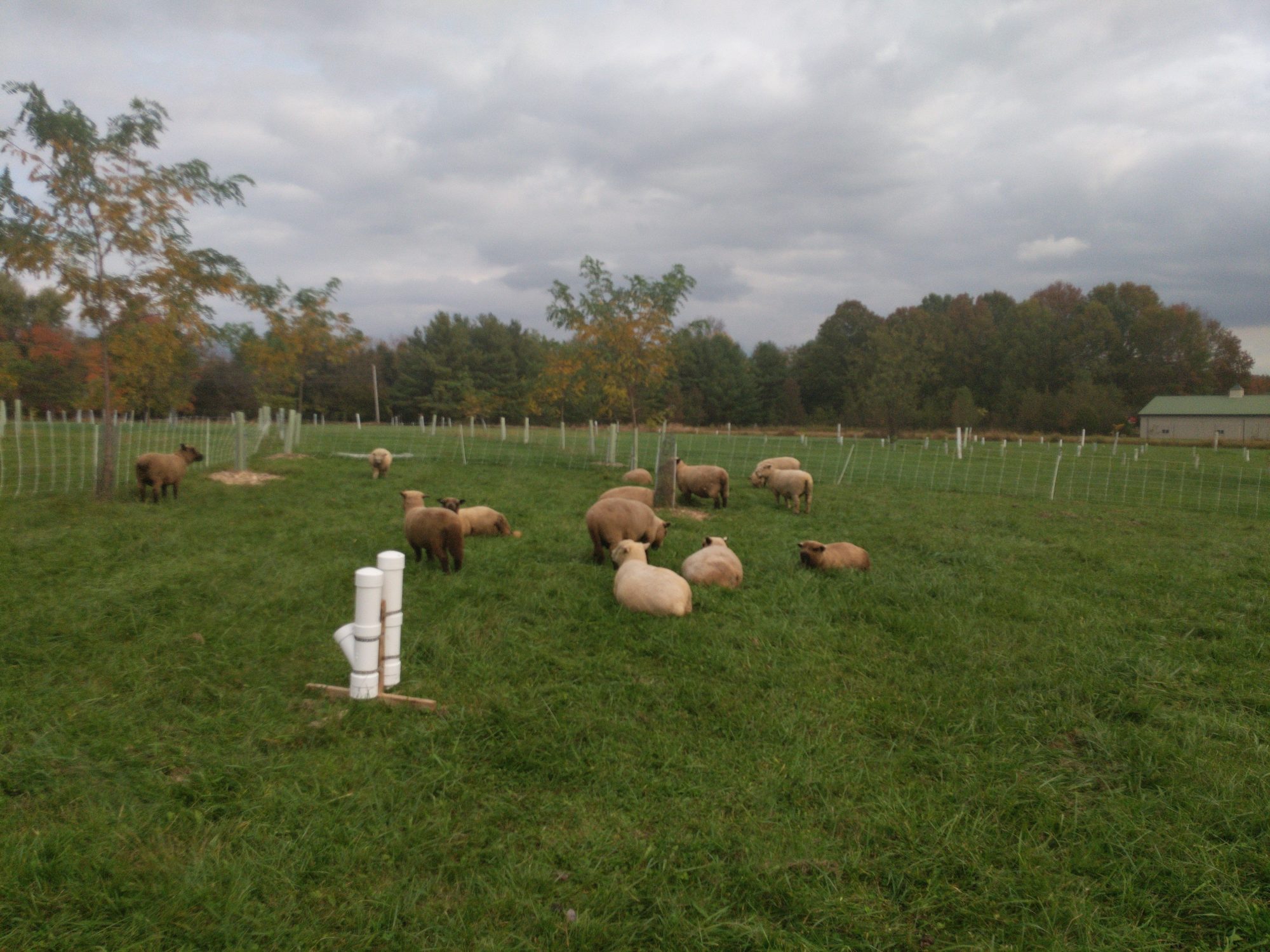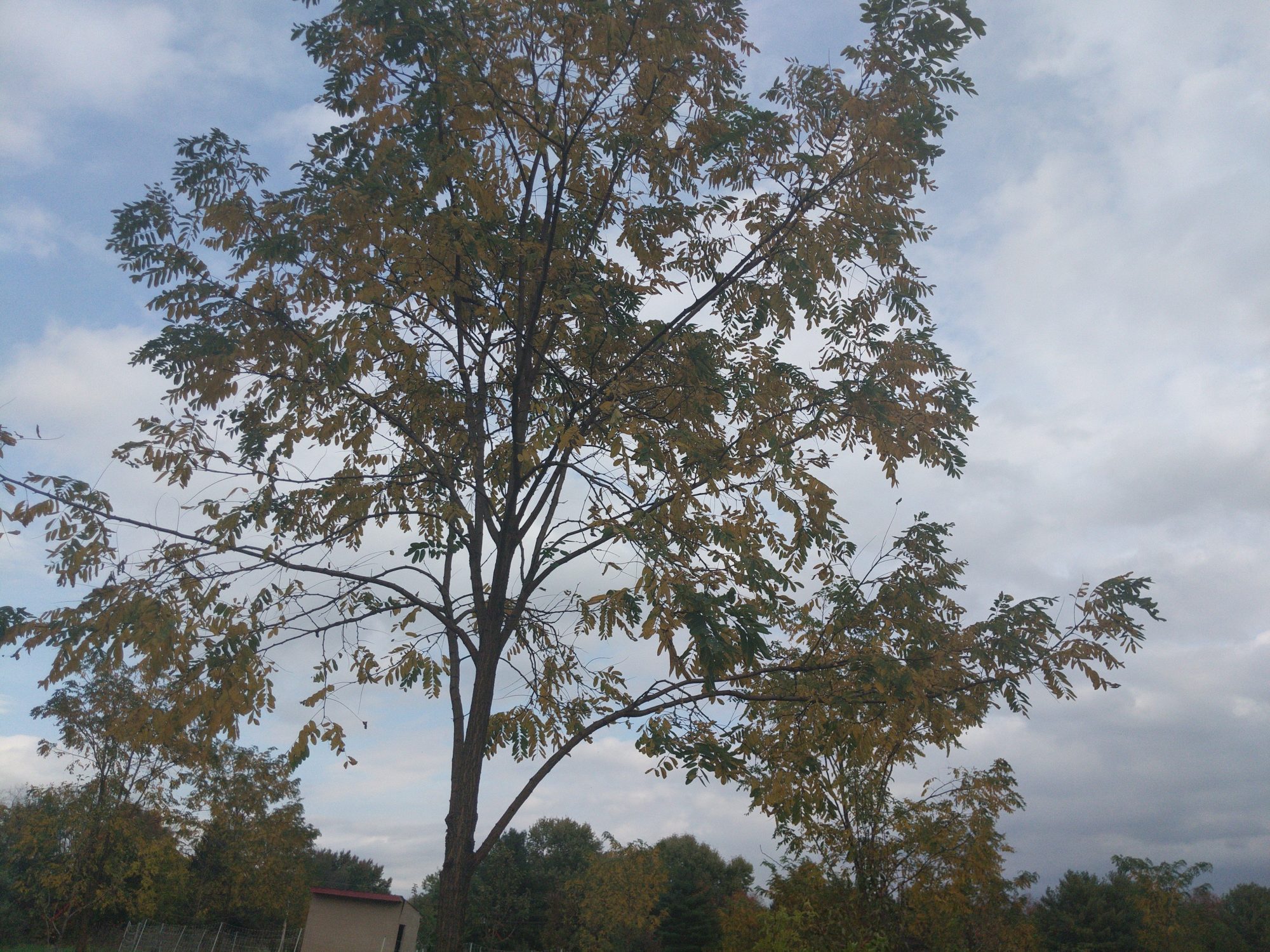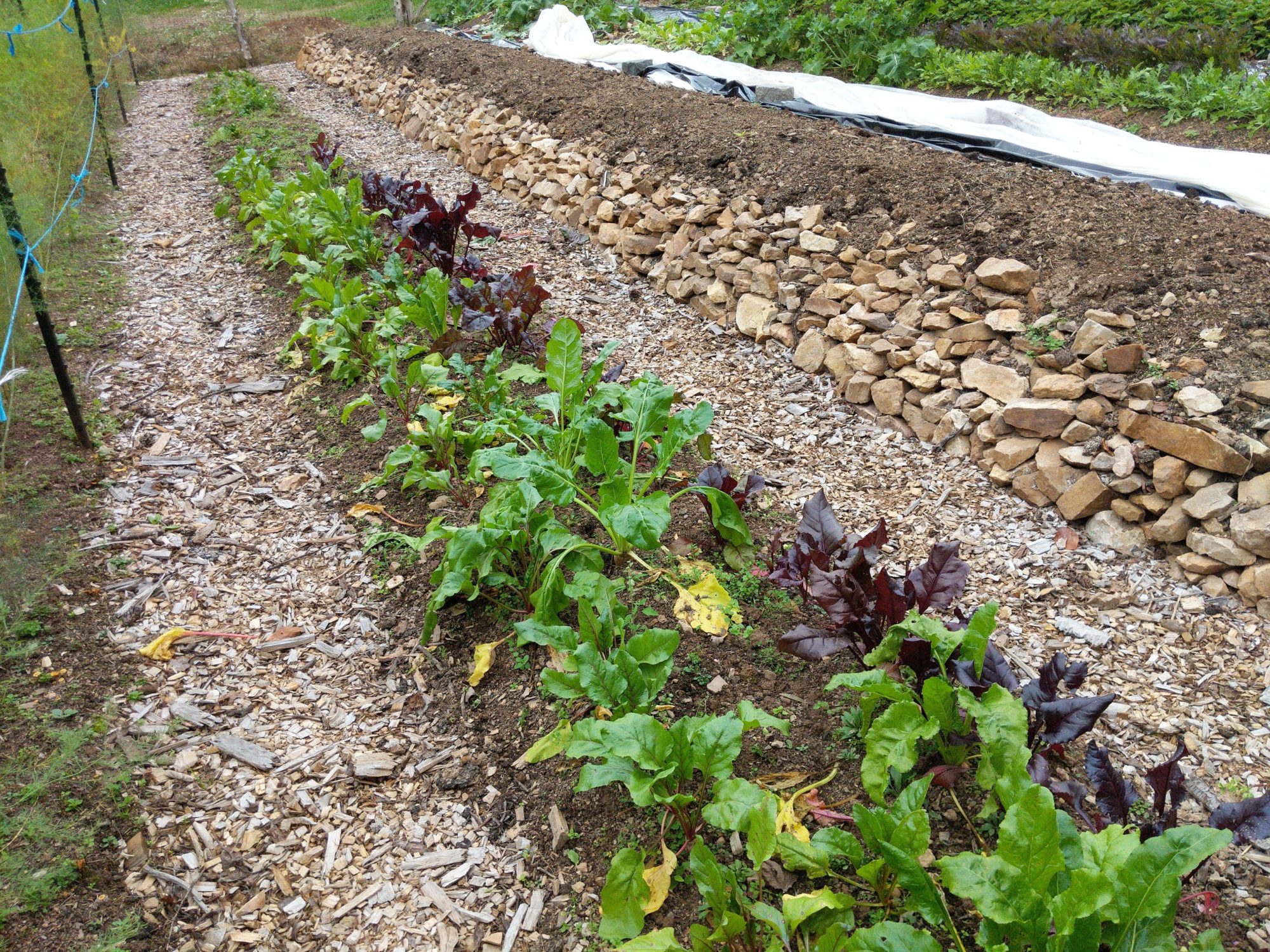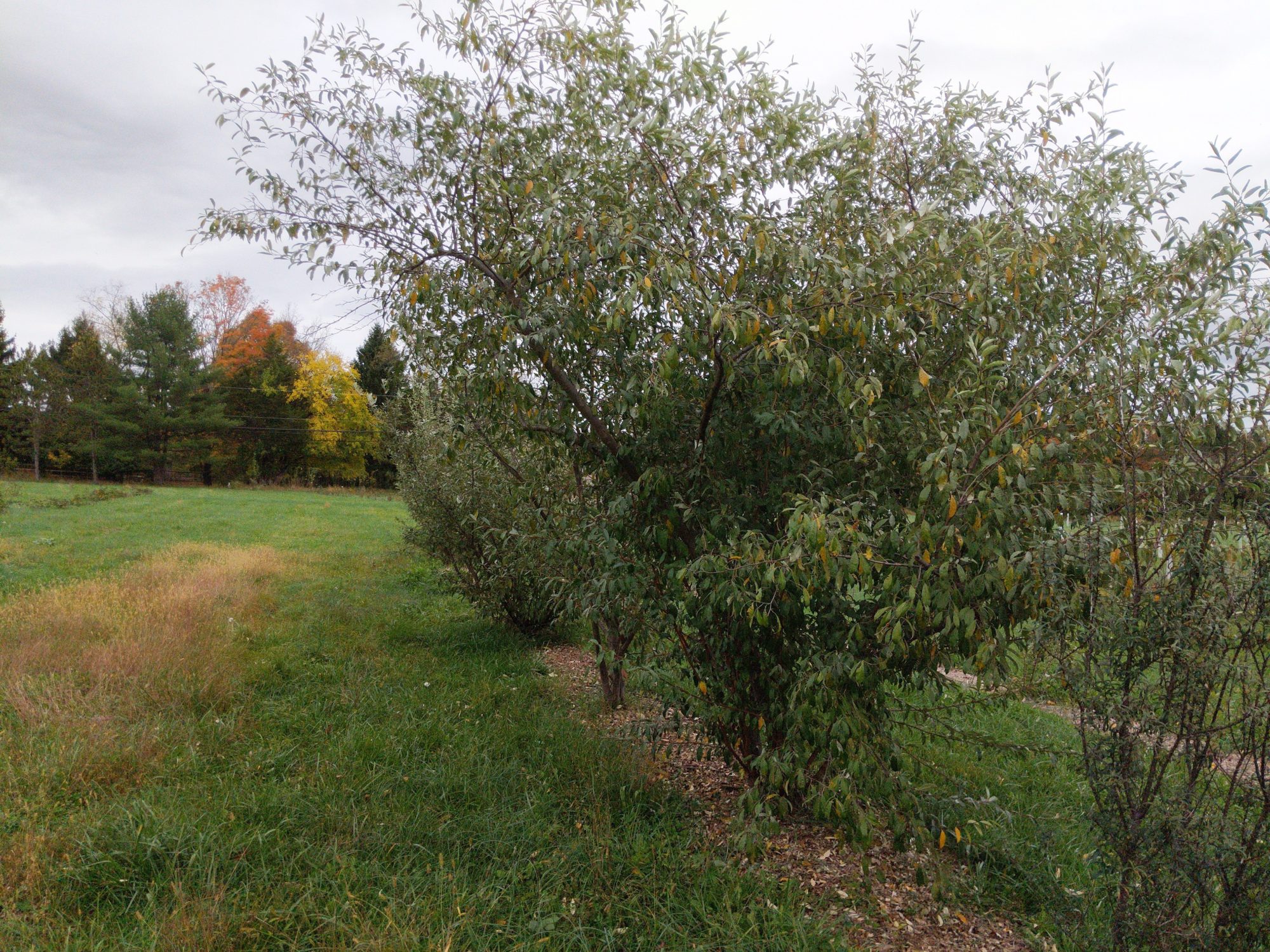On October 24th, 2020, I took a field trip to Hundred Fruit Farm in New Hope, PA, where Adam Dusen and his wife Sunghee Kim have been managing a 10 acre permaculture farm. Returning home from the Bahamas, where he was conducting marine research, Adam joined his parents, who purchased the land in 2015, with the long term plan of building an intergenerational homestead. Hundred Fruit Farm is home to over two dozen crops, including persimmons, apples, and pears, cherries, figs, and pawpaws — an emerging star in Northeastern agriculture.
Fruit, vegetables, and herbs from 100 Fruit Farm are sold primarily through a buyer’s club and twice weekly on farm pickup during the growing season.
Whereas POP is partial to food forests, Adam prefers silviopasture, a kind of agroforestry which integrates animals into farming practices. Adam explained that food forests can be challenging in the northeast, since ground layers require a lot of maintenance and the canopy layers blocks light and suppress competition.
The HFF family consists of some “permanent” residents, such as chickens, pigs, and the show-stopping babydoll lambs, as well as some intermittent visitors like ducks and other birds who come and go as they please. The farm has installed bird boxes throughout the property to draw predators of more harmful insects, while herbs and black locust trees attract the more helpful bugs. The pigs, ever the natural garbage disposals, suck up fallen fruit and disrupt the insect cycle.
But as our visit made clear, the real boss of Hundred Fruit Farm, who keeps the other animals in line (including the humans) is a cat called Nibbles — a well-earned name, as my partner came to find out. For most of the trip, our feline overlord was never more than a few feet away, a stealthy guardian who ensures no interlopers were disrupting the ecosystem.
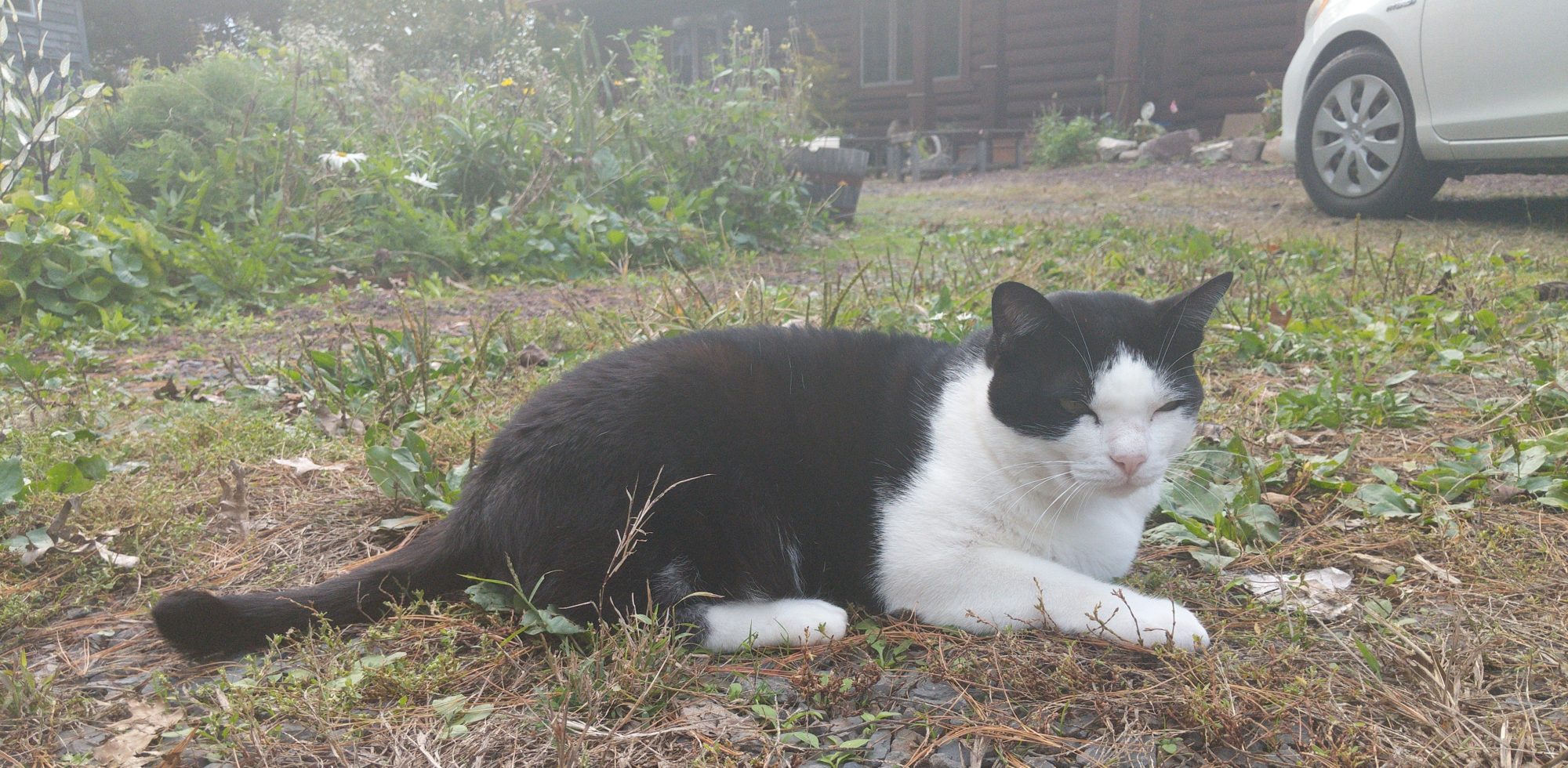
An example of how education can be integrated into the everyday material concerns and lifeways, Adam has been running a permaculture design course since 2015. In fact, his previous students deserve some credit for the design of Hundred Fruit Farm itself. It invokes a more Indigenous approach to learning, where land serves as both teacher and context.
In discussing the relationship between permaculture and Indigenous practices, it is important to recognize that this relationship isn’t and hasn’t been equitable. As Indigenous leaders and organizations have pointed out, the “borrowing” of Indigenous practices often divorces them from their cultural context and Indigenous perspectives. Although it offers many lessons on regeneration and stewardship, permaculture as a movement continues the Western trend of separating humans from nature. In this view, humans are inherently harmful, and must be reformed, or “reconnected” to nature.
Japanese philosopher Karatani Kôjin has written about how the emergence of the concept of “landscape” corresponded to a Westward shift in Japanese thought, wherein the framing of landscape, as such, represented an imposition of individualist perspective onto place — the totality of the natural world which has always existed and will continue to exist, independent of our perceptual enclosures. While this may seem abstract and theoretical, it has real world impact. As the Indigenous leaders express in their statement, peoples, cultures, language, and history are “intricately tied to place”, and therefore permaculture’s universalist “framing”, to the exclusion of these things, can be counterproductive and harmful.
In recognizing that permaculture owes much to Indigenous wisdom, Adam acknowledged that the movement has a responsibility to pay more attention to Indigenous voices. He agrees with the critique of the permaculture movement as engendering predominantly white spaces, and says that it needs to be more intentional about making space for people of color. After Bill Mollison and David Holmgren (credited as “founders” of permaculture) handed over the reins to the next generation, it was mostly other white people who took up the mantle.
Adam says that some of the people hailed as “heroes” do not represent the values of the movement. Environmentalist Murry Bookchin warned about the shift from social ecology to “deep ecology”, the latter feeding into so-called “prepper culture”. Whereas the preppers are concerned with scarcity, Indigenous practices seek to cultivate abundance. Central to this distinction is a difference in orientation: individualist versus collectivist. As Adam said during my visit, “we are all only as strong as our communities”.
Few things tested this strength and highlighted the importance of community as much as COVID-19. I asked how the pandemic impacted daily operations at Hundred Fruit Farm, as well as he and his family’s livelihood. Adam said that the farm was the best place to ride out the pandemic, since it allowed him regular and safe access to the outdoors, as opposed to so many of us who had to remained cooped up during lockdowns. It was also a boon for permaculture, with new attention being paid to local farming, given how infections ravaged the normal supply chain. HFF actually saw a boost in both the PDC business and subscriptions to their Buyers Club. Adam was also thankful that his situation allowed him to care for his parents, who due their age were more vulnerable.

Toward the end of my visit, Adam and I discussed how COVID-19 foreshadows the climate crisis. I asked him what lessons we might take from the pandemic. He said that the COVID crisis demonstrated the “power of people”, and that when the economy collapsed, it became clear who really creates and sustains value, that it is regular working people who form the backbone. COVID showed people’s resilience, but looking toward the horizon, Adam says we can weather future crises if we put our minds to it, and if collectively we recognize that the focus on a local/regenerative economies must become permanent.
All in all, the trip was encouraging — a valuable commodity in a year so full of crisis and controversy. Much of the work at Hundred Fruit Farm mirrors efforts by POP to regenerate local ecosystems, reconnect people to land, and to cultivate stronger local economies. In a time marked by social division and unrest, these efforts are a reminder of the need for collective action and building community.
Photography and blog post by Kermit O, Orchard Intern
SUPPORT US! If you found this entry useful, informative, or inspiring, please consider a donation of any size to help POP in planting and supporting community orchards in Philadelphia: phillyorchards.org/donate.
